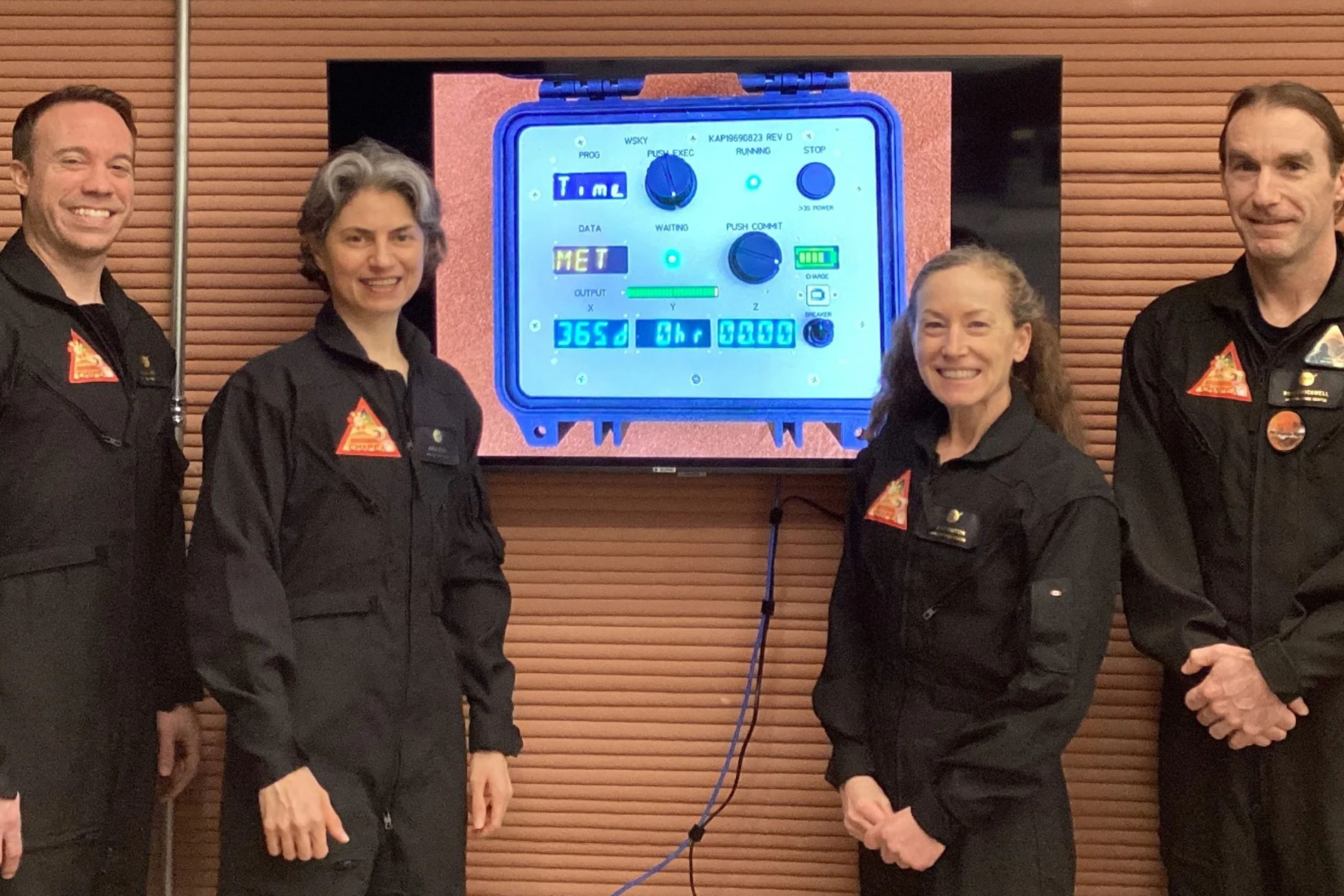The four-person volunteer crew of a NASA mission to simulate a Mars environment have emerged after more than a year in isolation.
Ross Brockwell, Anca Selariu, Nathan Jones, and Kelly Haston became the first crew to complete their stay “on Mars” as part of a series of three CHAPEA (Crew Health and Performance Exploration Analog) missions planned by NASA.
The 1,700 square foot 3D-printed structure, located at the Johnson Space Center in Houston, Texas and known as Mars Dune Alpha, is designed to simulate a realistic Mars habitat to support long-duration, exploration-class space missions.
Mars Dune Alpha features four private crew quarters, lounge areas, food growing stations, a dedicated medical station, and dedicated workstations.
LIVE NOW: The first ever CHAPEA crew will exit the ground-based Mars simulated habitat after 378 days. https://t.co/vFESM9DUyw
— NASA’s Johnson Space Center (@NASA_Johnson) July 6, 2024
As part of the 378-day mission, the team grew and harvested their own vegetables, and conducted simulated mars walks.
Newsweek has contacted NASA for comment.
Speaking at the event to mark the group’s departure from Mars Dune Alpha, Steve Koerner, deputy director at Johnson Space Center said the crew had conducted “crucial science as we prepare to send people on to the Red Planet.”
“By growing and harvesting their own vegetables, communicating with a 22-minute delay at some times, and conducting simulated Mars walks, this crew has helped us obtain crucial information as we prepare to return to the moon and on to Mars.
“Mars is our goal,” he added.
NASA
NASA said the research generated from the project will be used to inform risk resource trades to support crew health and performance while living on Mars during an extended duration mission.
The project was designed to simulate conditions on future Mars missions, including environmental stressors such as resource limitations, isolation, equipment failure, and heavy workloads, according to NASA.

Mark Felix/AFP via Getty Images
In related news, Russian plans to build its own space station by 2033, following its announced withdrawal from the International Space Station program, were recently approved by the head of Russia’s space agency.
A post to social media platform Telegram from the state-owned news agency RIA Novosti read: “The head of Roscosmos, Yuri Borisov, approved the schedule for the creation of the Russian orbital station.”
The post said that “contracts have also been signed for the creation of the station itself, and a new ship for flights to it on the Angara rocket from the Vostochny cosmodrome,” a spaceport located near the Russia-China border.
Borisov is also recently reported to have admitted that American astronauts did indeed land on the moon in an address to the State Duma, according to Intellinews.
“As for whether the Americans were on the moon or not, I have one fact to share,” he was reported to have said.
“I was personally interested in this matter. At one time, they provided us with a portion of the lunar soil that the astronauts brought back during their expedition.”
Borisov said tests performed on the samples by the Russian Academy of Scientists confirmed their authenticity. Previous polling suggested that just under half of Russians believe America’s 1969 moon landing was a government hoax.
Do you have a story we should be covering? Do you have any questions about NASA or space exploration? Contact LiveNews@newsweek.com
Uncommon Knowledge
Newsweek is committed to challenging conventional wisdom and finding connections in the search for common ground.
Newsweek is committed to challenging conventional wisdom and finding connections in the search for common ground.
